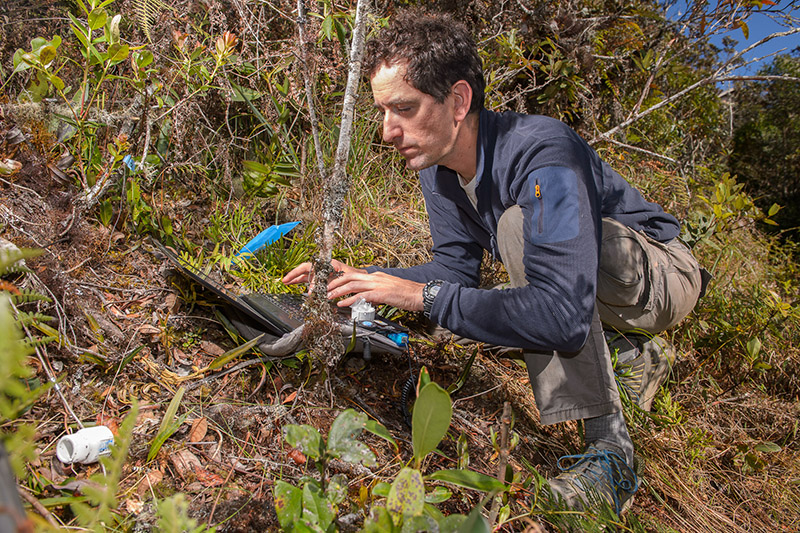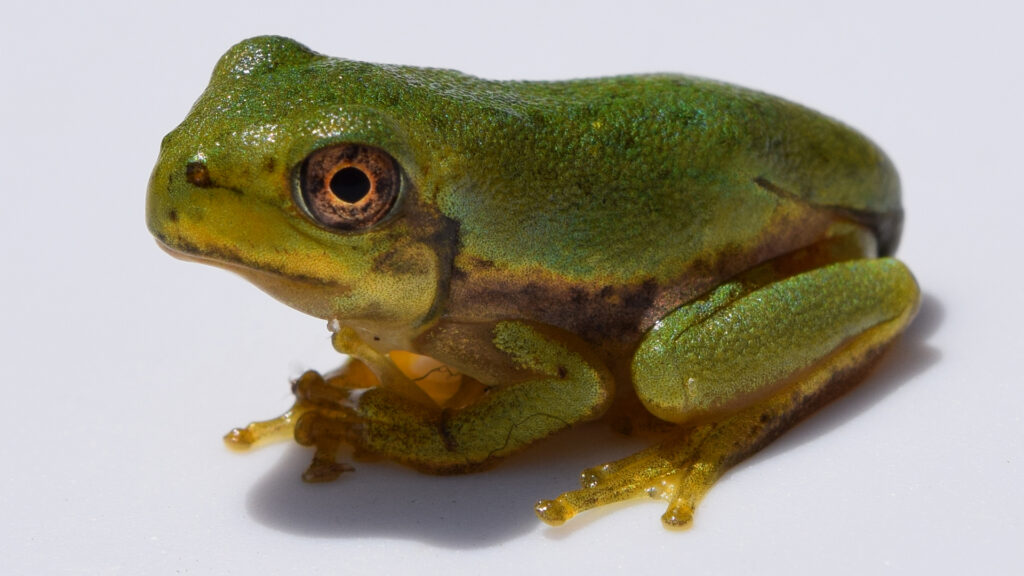By JoAnn Adkins, FIU News
Amphibians are in trouble and in desperate need of conservation action, according to a new global assessment of the world’s amphibian population.

Salamanders are experiencing the greatest decline in numbers, but frogs, toads, newts and salamanders throughout the Neotropics — extending from South Florida and Caribbean islands to Central and South America — are of particular concern, according to Alessandro Catenazzi, Florida International University biologist and one of the primary researchers on the international project.
The team evaluated the status of 8,011 species of amphibians tracked by the International Union for Conservation of Nature (IUCN). Their findings, published this week in Nature, indicate nearly 41% of amphibian species are threatened with extinction, making them the most imperiled class of vertebrates on the planet. Since 1980, at least 37 species have gone extinct, with disease and habitat loss being the primary culprits. The scientists warn climate change is quickly emerging as a major threat, attributing to 39% of populations declines since 2004.
“Global emerging diseases increasingly threaten biodiversity worldwide, and amphibians are one of the most dramatic examples of species extinctions caused by disease,” Catenazzi said. “No other group of vertebrates has been so negatively affected by a single disease. We urgently need better strategies to prevent pandemics and mitigate the effects of introduced disease.”

While the news is not good for amphibians, the scientists do offer hope in this latest assessment. Enforced habitat protections resulted in status improvements for some species, indicating this should be a conservation priority, especially in regions where agriculture, timber, plant harvesting and infrastructure development are ever-present.
The Global Amphibian Assessment is the second of its kind. The first assessment was completed in 2004, offering scientists a baseline of data to measure extinction risk for this latest study. Throughout the world, there are 8,615 known species of amphibians with 8,011 being listed on the IUCN’s Red List, a comprehensive information source on the global conservation status of animals, fungi and plants.
“The Global Amphibian Assessment is our best tool to monitor changes in the conservation status of amphibian biodiversity, and to provide highly vetted and curated information that can form the basis for management and conservation actions aimed at preventing the extinction of species,” he said.
The current assessment focused on population trends, ecological requirements, threats and distributional boundaries of amphibians worldwide. While the number of threatened and extinct species is increasing, the scientists hope this latest research will motivate governments and conservation agencies to substantially increase their investment and political will for conservation efforts of the world’s amphibians.
This piece was originally published at https://news.fiu.edu/2023/climate-change-emerges-as-major-driver-of-amphibian-declines-new-research-finds
Sign up for The Invading Sea newsletter by visiting here. If you are interested in submitting an opinion piece to The Invading Sea, email Editor Nathan Crabbe at ncrabbe@fau.edu.



